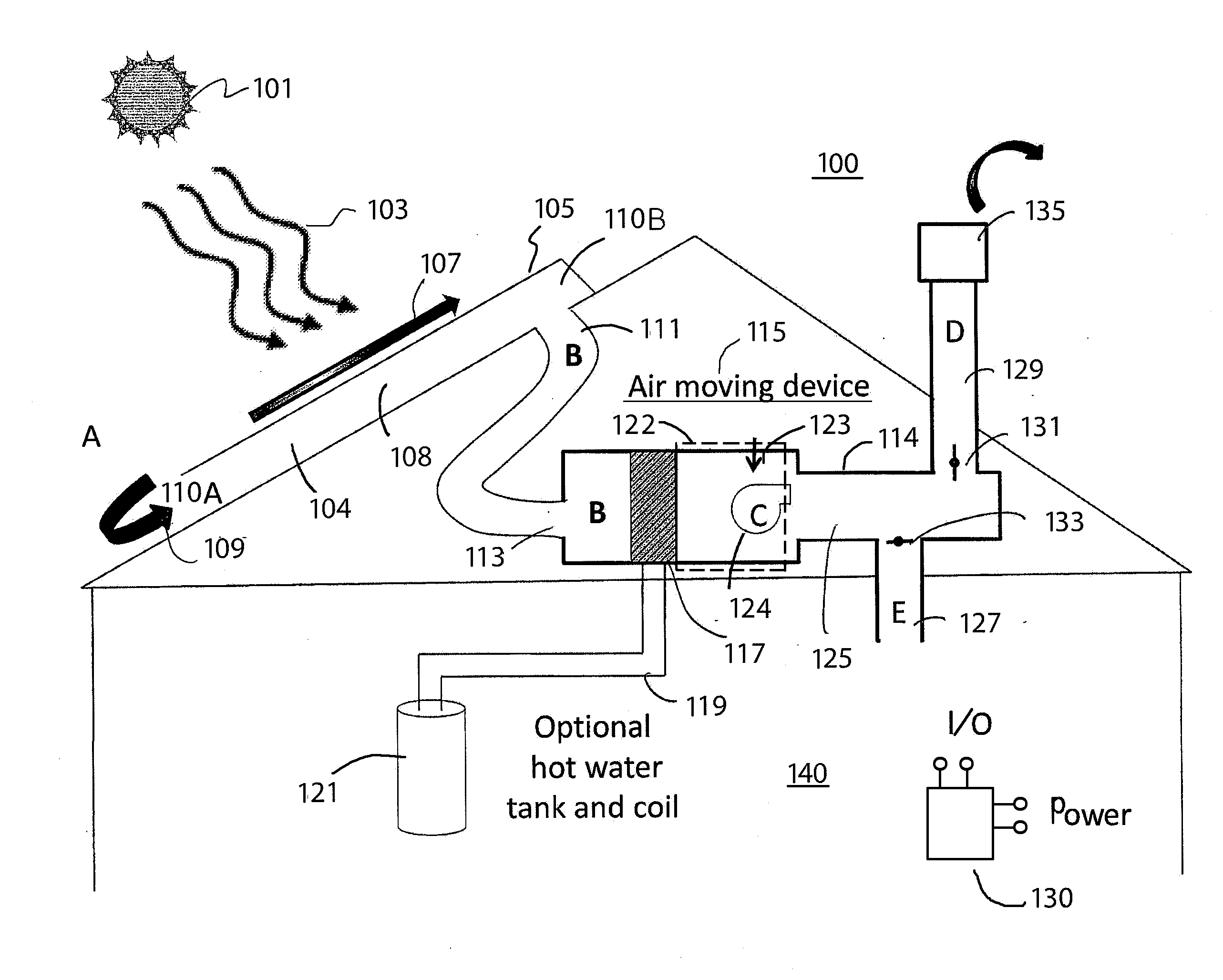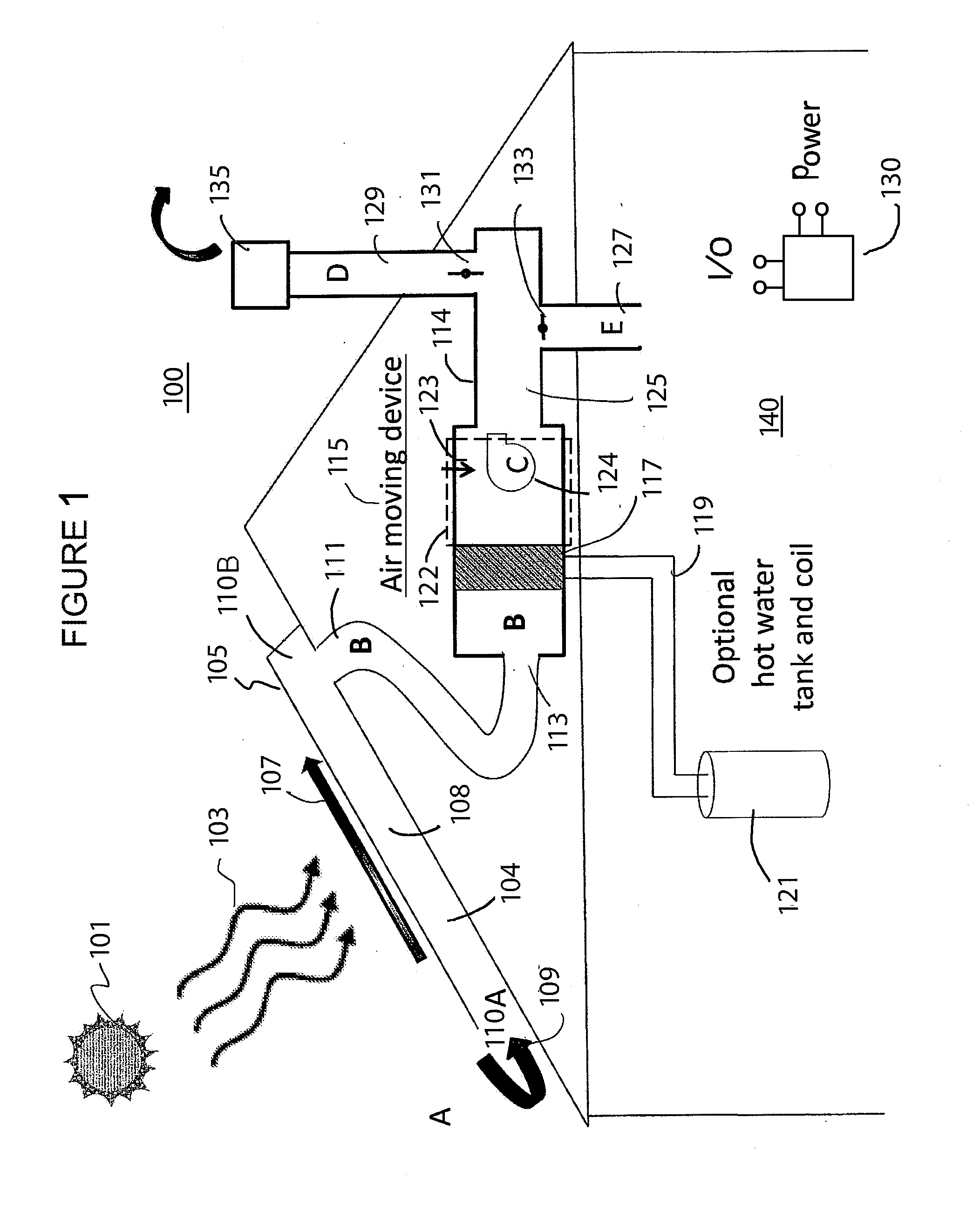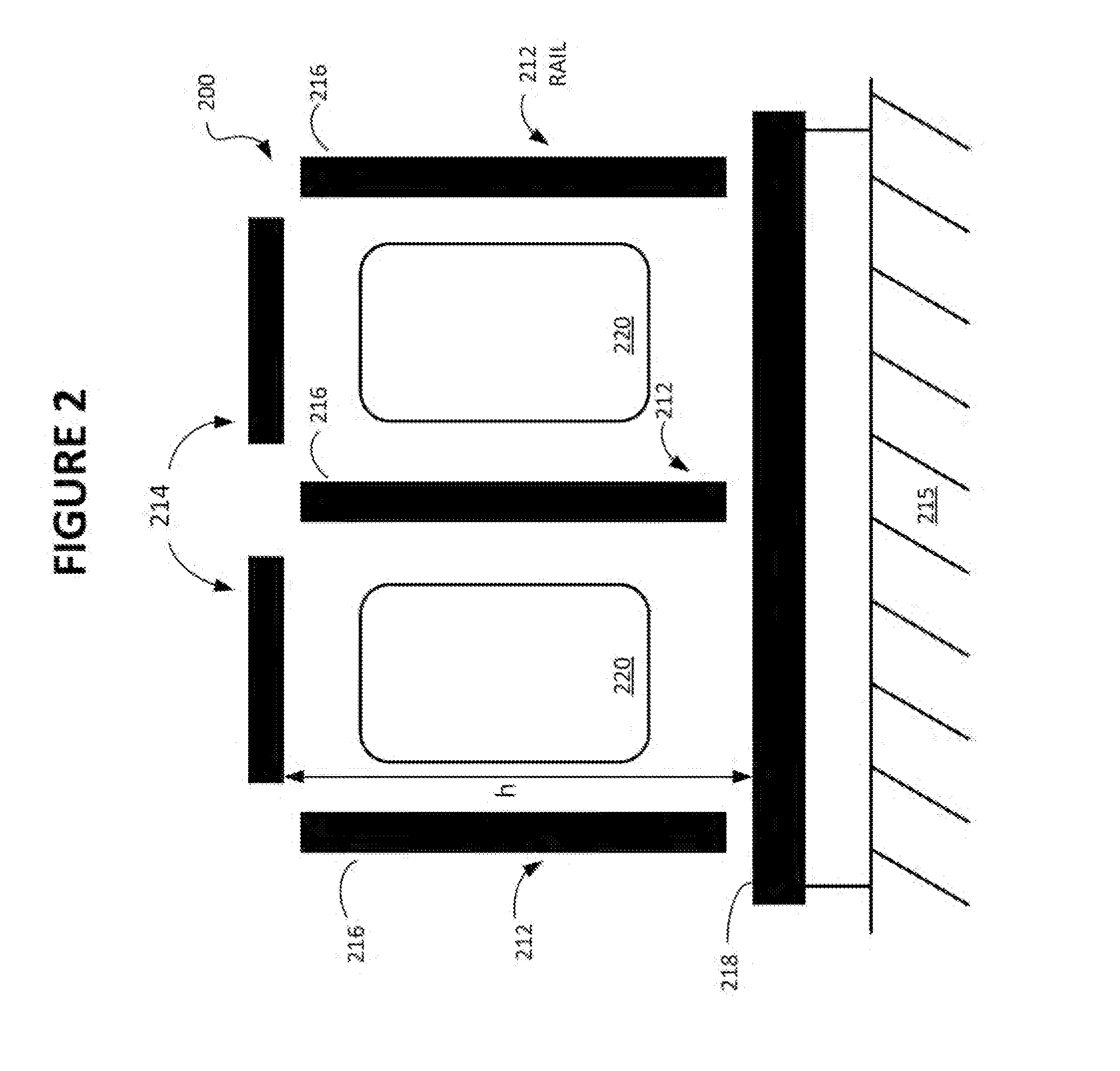Method and Structure for a Cool Roof by Using a Plenum Structure
a technology of plenum structure and cooling roof, which is applied in the direction of thermal-pv hybrid energy generation, ventilation system, heating type, etc., can solve the problems of mass species extinction, harmful to humans, and increase the rate of warming, so as to improve the operation procedure of solar modules and facilitate use. , the effect of reducing the cos
- Summary
- Abstract
- Description
- Claims
- Application Information
AI Technical Summary
Benefits of technology
Problems solved by technology
Method used
Image
Examples
Embodiment Construction
[0044]The present invention relates to operation of thermal solar system. More particularly, the present invention provides a method and structure for cooling roof by using a plenum structure associating a thermal solar system. Merely, by way of example, the present invention has been applied to a thermal solar module configured on a building structure, but it would be recognized that the invention has a much broader range of applications.
[0045]FIG. 1 is a simplified side view diagram of a thermal solar system according to an embodiment of the present invention. This diagram is merely an example, which should not unduly limit the scope of the claims herein. One of ordinary skill in the art would recognize other variations, modifications, and alternatives. As shown, the thermal solar system 100 includes a plurality of thermal modules spatially configured as an N by M array, where N is an integer equal to or greater than 1, and M is an integer greater than 2 spatially disposed and att...
PUM
 Login to View More
Login to View More Abstract
Description
Claims
Application Information
 Login to View More
Login to View More - R&D
- Intellectual Property
- Life Sciences
- Materials
- Tech Scout
- Unparalleled Data Quality
- Higher Quality Content
- 60% Fewer Hallucinations
Browse by: Latest US Patents, China's latest patents, Technical Efficacy Thesaurus, Application Domain, Technology Topic, Popular Technical Reports.
© 2025 PatSnap. All rights reserved.Legal|Privacy policy|Modern Slavery Act Transparency Statement|Sitemap|About US| Contact US: help@patsnap.com



